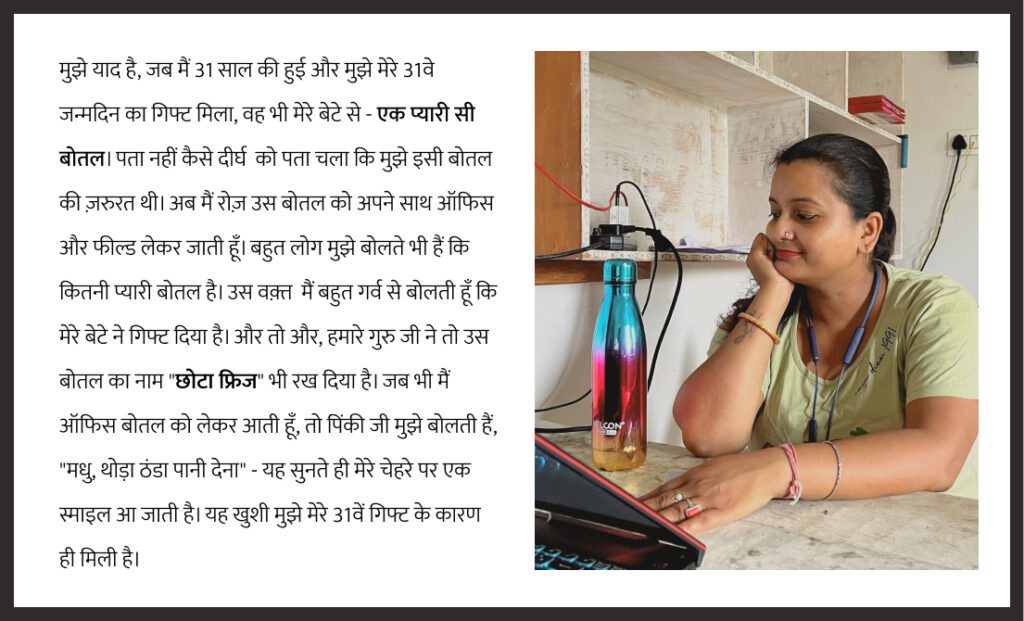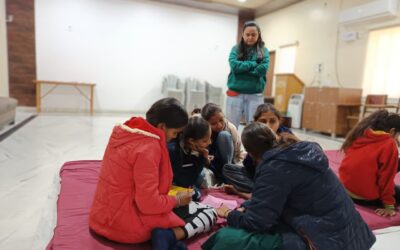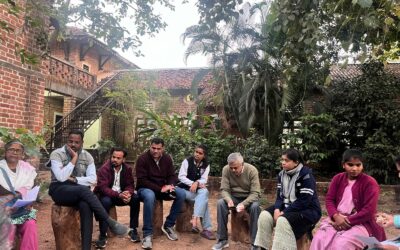There are moments when our minds wander, leaving us tangled in our thoughts. When faced with crucial decisions, we often arrive at the unsettling conclusion: “I don’t know.” Earlier when I would reach this conclusion in my brain, that pretty much used to be a full stop. I would skip whatever I was into to be free from the stress of not knowing.
Navigating Uncertainty
From Paul McCartney’s “I Don’t Know” to the Arctic Monkeys’ “Do I Wanna Know,” my life has revolved around things I know, things I can know, and the rest that I don’t know. Everything is great except when my brain decides to go for a walk. It’s not just any random walk, but rather a fairly long walk full of ideas that are not exactly helpful. They just clutter up my mind space. Also, the reason for mentioning Paul McCartney and Arctic Monkey is that all of you after reading this blog go and listen to both songs, better you can even listen to one of them in the background as well while reading. This is how my brain works. I was fully focused on one idea initially when I started writing which was “I don’t know” but somehow I am sharing song recommendations here in between.
Reflections On Uncertainty
Honestly, this isn’t exactly a matter of concern for me but the flying full stop which I arrive at after believing that I don’t know used to be the main villain of my story because no matter what the information is about If I am curious I can’t help but try to somehow get myself aware of that information, whether I understand it or not is another issue.
A couple of years back I read a book written by Joseph Nguyen. Funnily enough, the title was repelling for me. “Don’t believe everything you think”. Why not? Then, what am I supposed to believe? Am I supposed to believe what I am told without thinking about what was told to me or just think about everything but not believe in it? Glad I came across the book because as much as the title was funny for me the ideas that were discussed in the book had a lasting impact on my current thought process and how my brain functions. Somewhere in the book, Joseph writes this:
In short, know that you already know and if you don’t know, know
JOSeph nguyen
that you can know what you need to know
Embracing Uncertainty
Well isn’t that contradicting the idea of not knowing? Certainly, there are things for which even if you try a lot, there can be a chance of not developing an understanding. Although there is a chance of never understanding something, the idea that “you can know what you need know” bolstered my thought process. It gave me immense strength to learn whatever I come across. But can I really know what I don’t know if I know what I have to know or interestingly if I know how to know? The answer to this question is yes and surprisingly anyone can, given one is determined and has an innate desire to defeat the idea of not knowing because if not knowing is a game I for one would never want to lose even a single round.
Practical Application: Facilitating Learning
Over the past two months with Project Potential, I’ve witnessed firsthand the power of embracing uncertainty. Arriving in Thakurganj, Kishanganj, Bihar, on May 30th, I was uncertain about my role for the next 15 months. My first step was aligning with the organization’s mission and values.
I met with the program team and stakeholders and realized the need to train participants to submit ground stories on storytelling development. As a result, we decided to hold a session at our monthly peer learning meeting, attended by Youth Mobilisers from Thakurganj and Pothiya in Kishanganj.
Somehow I ended up with this task on my hand. Now, let me clarify something for the sake of everyone reading this blog. I as a matter of fact am not a writer. I have also never taken any formal education when it comes to writing in any form. Each one of us has our own understanding about what a good story is. This understanding is individualistic to its core. Yet I wanted to give my best. I can be a facilitator who just transfers what they have learnt but I also wanted to use my prior understanding of visual design and incorporate my experience along with an activity that I designed with the help of Artificial Intelligence.
Designing The Presentation
What we like may not necessarily appeal to others, and this idea applies universally to everything, whether it’s a story, poem, picture, or musical composition. I will share some steps I followed to design a presentation for the session and then a story written by one participant.
- Identifying Challenges in Storytelling
- Using ChatGPT to analyze the current challenges and ground stories for context setting for the session
- Curating Content for Effective Presentations
- Simple prompts like “give me reading material based upon the analysis of challenges”
- Facilitating Engaging Learning Sessions
- Creating a simple presentation to convey the ideas to the participants
- AI-Driven Assessment and Feedback
- Lveraging AI to analyze all the submissions.
- Rate the stories based upon various storytelling parameters like coherence, clarity of thoughts etc.
- Generate constructive feedback
- We leveraged artificial intelligence in all of these steps to determine the content for the presentation based on the challenges faced.
Intention
But as I said the message I wanted to transfer to the participants was not just about the concepts of storytelling but how one can be creative with the medium and everything which is relevant for making a story compelling and relatable. My main expectation from the session’s outcome was to read the stories written by participants afterwards. The previous submissions had provided insights into the most critical storytelling needs, guiding our focus. And to also make my life easier my presentation only had 7 slides with 6 of them having only one Hindi word and the last one with a statement made from the words in the first 6 slides.

Each of these single Hindi words delivered content for the storytelling sessions, with specific ideas built around them. For example, when the word “सुनना” came up, we discussed various mediums for storytelling. I can write more about what I was trying to convey through this presentation but let’s focus on the outcome.
Outcome
For the activity, I asked the participants to choose any inanimate object around them and come up with a story based on the ideas discussed in the session. ChatGPT analyzed eighteen stories submitted for review. I intentionally told people to be free from structures while writing. I noticed that most of the submissions started with the word “मैं” which is “I” in English. One of the reason could be the design of the presentation. I started the session with the word “मैं” talking about the person writing the story which is a classic example of learning by imitation.
After the analysis we got to know that a lot of stories were personal and reflective. some of them had great depth exploring themes like existentialism and belief systems. I conducted this session in Project Potential’s Thakurganj office, and many people chose “Mirror” to write a story on. I want to present a story that Madhu Ji wrote about her water bottle, which her son gifted her. She was a participant in the session and part of the Rural India Youth Leadership program team.

Reflection
I tried to come up with a document rating the effectiveness of the session based upon the submissions and the session design using AI to validate my methods. I certainly noticed some limitations of the model. The analysis of the session was based upon learnt parameters. It doesn’t have the context of the person writing the story. One good thing about using AI for analysis and assessment is its impartial nature of assessment. Although, it lacks personal context, it can assess the submissions and evaluate them impartially.
Man-made intelligence is an answer to the limitations of accessibility and connects one with an unimaginable amount of information. It can also offer methods of learning that information. Basically the premise of uncertainty, not knowing, unawareness and everything which one doesn’t know can be solved with Artificial Intelligence. It provides the ability to access accurate sources and information.
However, the depth of understanding ultimately depends on the user’s initiative and engagement. Mindless explorations of Artificial Intelligence and models that are present today are just equivalent to doom scrolling.




0 Comments